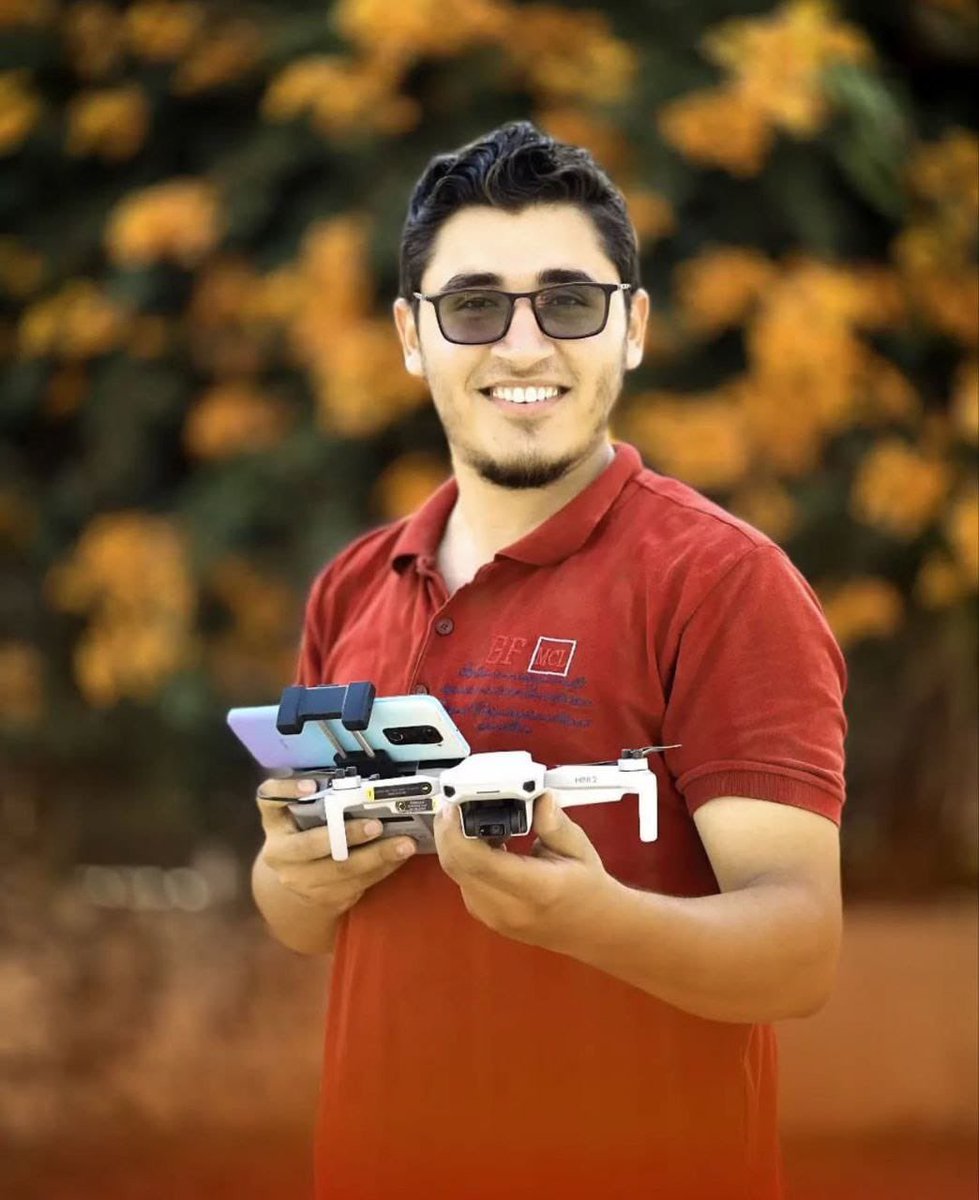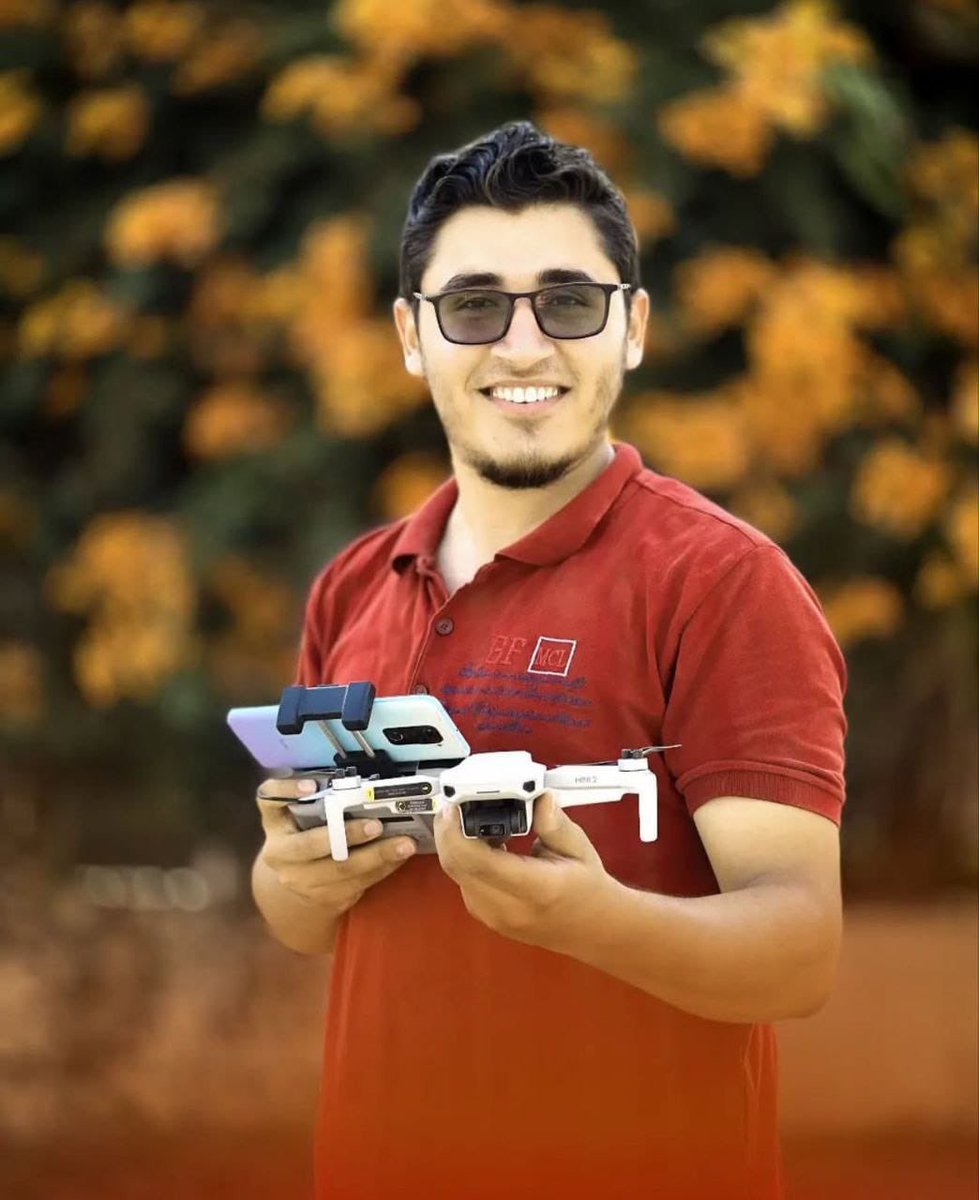Breaking: Israeli Strikes Claim Life of Palestinian Photographer
Palestinian Photographer Hamed Ismael Al-Astal killed in Gaza
In a tragic turn of events, Hamed Ismael Al-Astal, a Palestinian photographer, was reported killed due to Israeli occupation airstrikes in the Mawasi area of Khan Younis, located in the southern Gaza Strip. This incident has not only drawn attention to the ongoing conflict between Israel and Palestine but also highlighted the dangers faced by journalists and photographers working in war zones. The announcement of his death was made by Quds news Network, a prominent news outlet covering Palestinian issues.
The Context of the Incident
The conflict between Israel and Palestine has been characterized by a series of violent confrontations, with civilians often bearing the brunt of the violence. The Mawasi area, where Al-Astal was killed, has been a focal point of various military operations. The region’s strategic importance and dense population make it a hotspot for clashes and airstrikes.
Photographers like Hamed Ismael Al-Astal play a crucial role in documenting the realities of life in conflict zones. They provide a visual narrative that captures the struggles, resilience, and suffering of people affected by war. However, their work often places them in grave danger, as seen in Al-Astal’s case.
The Role of Journalists in Conflict Zones
Journalism in conflict zones is fraught with risks. Photographers and reporters are not only tasked with providing accurate and timely information but also with ensuring their own safety amidst chaos. The death of Al-Astal underscores the perilous nature of their work. Many journalists have faced similar fates, often becoming collateral damage in the crossfire of military operations or targeted due to their profession.
- YOU MAY ALSO LIKE TO WATCH THIS TRENDING STORY ON YOUTUBE. Waverly Hills Hospital's Horror Story: The Most Haunted Room 502
The international community has raised concerns about the safety of journalists, calling for protections under international law. The UNESCO and various human rights organizations have emphasized the need to safeguard those who risk their lives to tell the stories of others, especially in conflict areas.
The Impact of Al-Astal’s Death
Hamed Ismael Al-Astal’s death is a significant loss for the Palestinian community and the field of journalism. His work contributed to raising awareness about the plight of Palestinians, capturing moments that resonate with audiences worldwide. The images and stories shared by photographers like Al-Astal are vital for fostering understanding and empathy among people unfamiliar with the realities of life in Gaza.
With the ongoing conflict, the documentation of events becomes even more critical. The narratives crafted by journalists can influence public opinion and policy decisions, which makes their safety and freedom of expression paramount.
Ongoing Conflict in Gaza
The situation in Gaza remains tense, characterized by periodic escalations of violence and military operations. The region has been under an Israeli blockade since 2007, leading to dire humanitarian conditions. The United Nations and various humanitarian organizations have repeatedly warned about the severe impact of the blockade on the civilian population, including restrictions on access to essential services and materials.
The continuous cycle of violence and retaliation between Israel and Hamas, the governing body in Gaza, exacerbates the situation. Each escalation leads to loss of life, destruction of infrastructure, and further straining already limited resources. The international community continues to call for a ceasefire and negotiations for a lasting peace, but a resolution remains elusive.
The Role of Social Media in Reporting
Social media platforms have become integral in disseminating news and information from conflict zones. The announcement of Hamed Ismael Al-Astal’s death was made via Twitter, a platform that has become a vital source of real-time updates during conflicts. Journalists and citizens alike use these platforms to share information, images, and videos, providing an unfiltered look at events as they unfold.
However, the use of social media also presents challenges. Misinformation can spread rapidly, and the risks associated with reporting from dangerous areas are compounded by the public nature of these platforms. Nevertheless, for many, social media remains a crucial tool for advocacy and raising awareness.
Remembering Hamed Ismael Al-Astal
As the world mourns the loss of Hamed Ismael Al-Astal, it is essential to remember the broader implications of his death. Each life lost in conflict is a reminder of the urgent need for peace and understanding. Al-Astal’s work will live on through the images he captured and the stories he told, serving as a poignant reminder of the human cost of war.
In honoring his memory, it becomes imperative for the international community to continue advocating for the safety of journalists and the protection of civilian lives in conflict zones. Ensuring that voices like Al-Astal’s are not silenced is crucial for fostering a more informed and compassionate global narrative.
Conclusion
The death of Hamed Ismael Al-Astal is a stark reminder of the perils faced by journalists in conflict zones and the ongoing tragedy of the Israeli-Palestinian conflict. His contributions to documenting the realities of life in Gaza will not be forgotten. As the situation continues to evolve, the need for accurate reporting and the protection of media professionals remains more critical than ever. The hope is that through awareness and advocacy, the cycle of violence can be broken and a path toward peace can be forged.

Breaking | Palestinian photographer Hamed Ismael Al-Astal was reported killed by Israeli occupation strikes on Mawasi area in the city of Khan Younis southern Gaza Strip. pic.twitter.com/1M8t3VTGvI
— Quds News Network (@QudsNen) June 9, 2025
Breaking | Palestinian Photographer Hamed Ismael Al-Astal Was Reported Killed by Israeli Occupation Strikes on Mawasi Area in the City of Khan Younis Southern Gaza Strip
The recent news about Hamed Ismael Al-Astal, a Palestinian photographer, has deeply resonated with many. It’s a tragic reminder of the harsh realities faced by those living in conflict zones. Al-Astal was reported killed due to Israeli occupation strikes in the Mawasi area of Khan Younis, located in the southern Gaza Strip. This incident not only reflects the ongoing violence in the region but also highlights the perilous nature of journalism in war-torn areas.
The Life and Work of Hamed Ismael Al-Astal
Hamed Ismael Al-Astal dedicated his life to capturing the essence of life in Gaza, portraying the struggles and resilience of its people through his lens. His photographs often depicted the daily lives of ordinary Palestinians amidst the backdrop of conflict. Al-Astal’s work was vital in bringing global attention to the humanitarian issues faced by residents of the Gaza Strip. He believed in the power of photography to communicate stories that words often fail to convey.
Throughout his career, Al-Astal won numerous accolades for his compelling images that showcased both the beauty and tragedy of life in Gaza. He worked tirelessly to document events that many would prefer to overlook, ensuring that the voices of the marginalized were heard. His photographs were not just images; they were a testament to his commitment to truth and justice.
The Impact of Conflict on Journalists
Being a journalist in a conflict zone like Gaza is incredibly dangerous. Journalists often find themselves in the crossfire, facing threats from various factions. The situation has only worsened with increased military strikes and hostilities. Al-Astal’s untimely death serves as a grim reminder of the risks that journalists take to inform the world about the realities of war. According to reports from various media outlets, including BBC News, many journalists have faced violence while trying to cover the ongoing conflict in the region.
In recent years, there have been numerous cases where journalists have been targeted. The International Federation of Journalists (IFJ) has documented an alarming rise in attacks on media personnel in conflict areas, emphasizing the urgent need for protective measures. Al-Astal’s story is a chilling reminder that the pursuit of truth can come at a devastating cost.
The Context of the Conflict
The ongoing Israeli-Palestinian conflict has a long and complex history, marked by violence, displacement, and deep-seated grievances. The Gaza Strip, where Al-Astal worked, has been a focal point of this conflict, especially since the blockade imposed by Israel in 2007. This has led to dire humanitarian conditions, with many residents struggling for basic necessities such as food, clean water, and medical care.
The situation in Gaza has drawn international attention, with various human rights organizations calling for an end to the violence. Reports by Amnesty International highlight the urgent need for accountability and justice for those affected by the conflict. The recent escalation in violence, including airstrikes and military operations, has further exacerbated the already dire situation for civilians, including journalists like Al-Astal.
The Role of Social Media in Reporting Conflicts
In today’s digital age, social media plays a crucial role in disseminating information about conflicts around the world. Platforms like Twitter and Facebook enable journalists and activists to share real-time updates, often providing insights that mainstream media may overlook. Al-Astal was active on social media, using it as a tool to share his work and the realities of life in Gaza with a broader audience.
Following his death, many took to social media to express their condolences and to highlight the importance of his work. The tweet from @QudsNen reporting on his death quickly circulated, illustrating the power of social media in shaping narratives around conflicts. This immediate response underscores the need for continued awareness and advocacy for those living in war-torn areas.
The Legacy of Hamed Ismael Al-Astal
Hamed Ismael Al-Astal’s legacy will undoubtedly live on through his powerful images and the stories he told. His commitment to documenting the struggles of the Palestinian people has left an indelible mark on the world of journalism. Al-Astal’s work serves as a reminder of the importance of bearing witness to history, especially in times of conflict.
As we reflect on his life and contributions, it’s essential to recognize the ongoing challenges faced by journalists in conflict zones. The risks they take to bring attention to critical issues cannot be overstated. Organizations such as the Committee to Protect Journalists (CPJ) are working tirelessly to advocate for the safety and rights of journalists worldwide. Their efforts highlight the need for a collective response to protect those who strive to uncover the truth.
The Importance of Supporting Journalists
In light of Hamed Ismael Al-Astal’s tragic death, there is a pressing need to support journalists, especially those working in conflict areas. Advocacy for their safety and rights is crucial in ensuring that they can continue their work without fear of violence or persecution. Initiatives aimed at protecting journalists, such as safety training and legal support, play a vital role in empowering media personnel around the world.
Moreover, it is essential for audiences to engage with and support independent journalism. By consuming news from credible sources and sharing the work of journalists like Al-Astal, we contribute to a broader understanding of the complexities surrounding conflicts. Awareness and advocacy can lead to tangible change, fostering a more informed and compassionate global community.
Remembering Hamed Ismael Al-Astal
As we remember Hamed Ismael Al-Astal, we honor not only his contributions to photography and journalism but also the countless lives affected by the ongoing conflict in Gaza. His story is a reminder of the human cost of war and the importance of shedding light on the experiences of those who often go unheard. In the face of adversity, Al-Astal’s work exemplifies the unwavering spirit of those who seek to tell the truth, no matter the cost.
In the end, let’s carry forward Al-Astal’s legacy by advocating for peace, justice, and the protection of journalists around the world. As we share his story, we also amplify the voices of the many who continue to struggle for their rights and dignity in the face of conflict.

